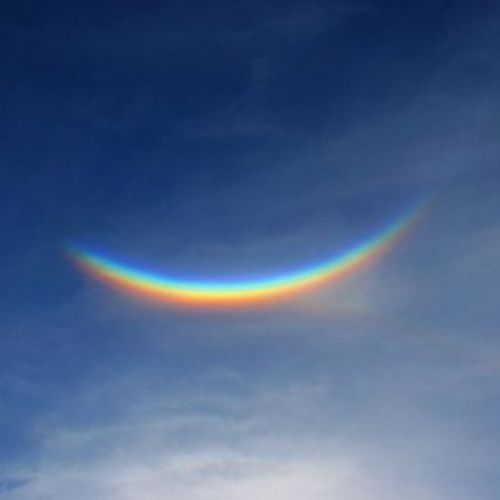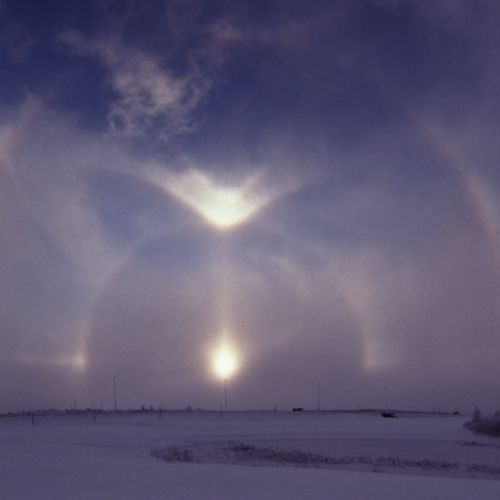| ID | #1704366760 |
| Added | Thu, 04/01/2024 |
| Author | July N. |
| Sources | |
| Phenomena | |
| Status | Result
|
| Resume |
Initial data
In the Church of St. Nicholas in Stockholm there is a painting "The Stockholm Miracle" by the artist Urban. It tells about a real astronomical event that took place on April 20, 1535. For several hours, Stockholm residents observed giant rings of light over the city, resembling several suns.
Many people thought that this was God's punishment for Sweden's sins and that the end of the world had come. Terrified, people hid in churches.
The famous politician and mathematician Olaf Petri commissioned the artist Urban to capture this phenomenon in a painting. Questions about the "solar disks" have been discussed for a century, and Urban's painting itself is now located in the cathedral of the Swedish capital.
Hypotheses
Halo

Halo usually appears around the Sun or moon, sometimes around other powerful light sources such as street lights. There are many types of halos, but they are mostly caused by ice crystals in Cirrus clouds at a height of 5-10 km in the upper troposphere. The form of the observed halo depends on the shape and arrangement of crystals. Reflected and refracted by the ice crystals, the light often turns into a spectrum, which makes halo look like a rainbow, but a halo in low light has a low chroma, which is associated with the peculiarities of twilight vision.
Investigation
The painting by the artist Urban "The Stockholm Miracle" tells about a real astronomical event (pargelia) that the people of Stockholm observed in 1535: six rings became visible around the sun, diverging in different directions. This phenomenon is called parhelion (or "sun dogs").
An original painting created shortly after the event and traditionally attributed to To Urban Malare, it is lost, and practically nothing is known about it. However, the 1636 copy made by By Jacob Heinrich Elbfas and stored in Storkirkane in Stockholm is considered to be an exact copy and until recently was mistakenly considered a restored original.
...
Sun dogs were apparently well known in the Middle Ages, as they are mentioned in the "Old Farmer's Almanac" (Bondepraktikan), which says that this phenomenon predicts strong winds as well as rain if sun dogs are paler than red.
However, according to an excerpt from the Vasa Chronicles, both Petri and mint master Anders Hansson were genuinely concerned about the appearance of these sun dogs. Petri interpreted the signs over Stockholm as a warning from God and ordered the painting to be made The bucket is folded and hung in front of his flock. Despite this devotion, he was far from sure how to interpret these signs, and in a sermon delivered in the late summer of 1535, he explained that there were two kinds of omens: one created by the Devil to lead humanity away from God, and the other created by God to distract humanity from the Devil — one is hopelessly difficult to distinguish from the other. Therefore, he considered it his duty to warn both his flock, consisting mainly of German burghers united in a conspiracy against the king, and the king himself.
Resume
Halo

Halo usually appears around the Sun or moon, sometimes around other powerful light sources such as street lights. There are many types of halos, but they are mostly caused by ice crystals in Cirrus clouds at a height of 5-10 km in the upper troposphere. The form of the observed halo depends on the shape and arrangement of crystals. Reflected and refracted by the ice crystals, the light often turns into a spectrum, which makes halo look like a rainbow, but a halo in low light has a low chroma, which is associated with the peculiarities of twilight vision.
Similar facts
Log in or register to post comments


